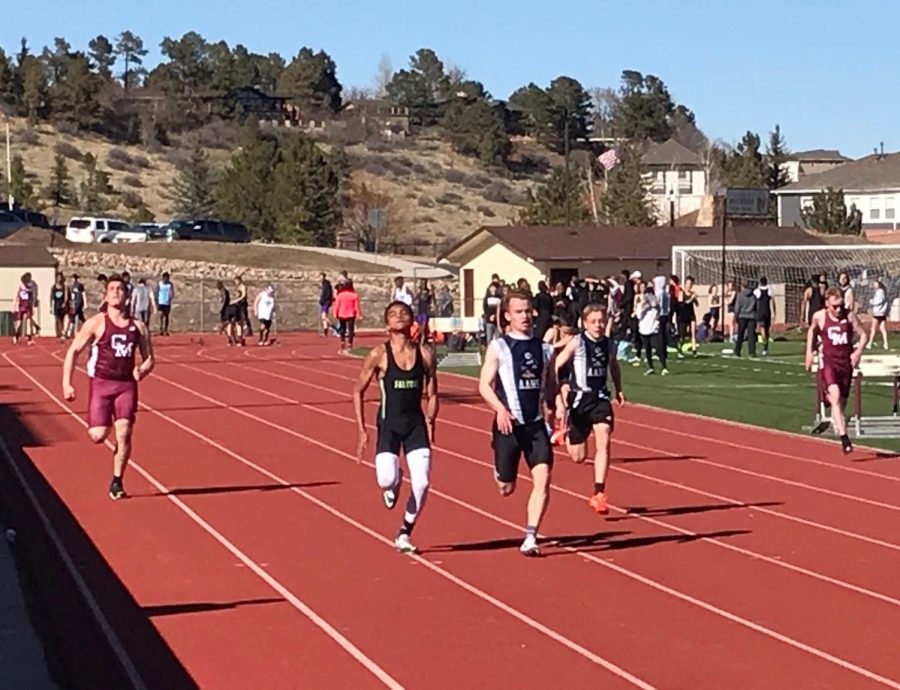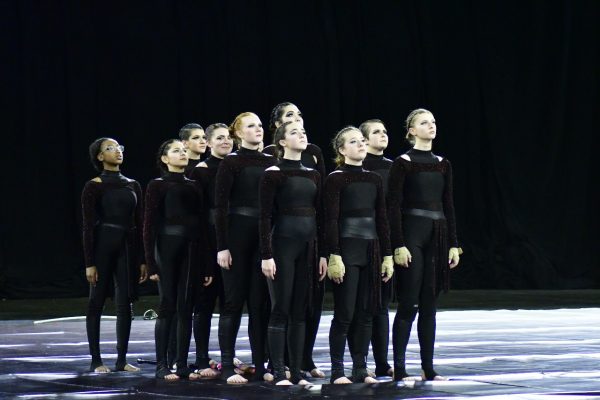Run to that track!
Air Acadamy High School track is getting ready for the season to start! This spring sport is starting off the year with weight training and prepping to run when it gets warmer outside. The track team does many different types of track workouts including sprints, long-distance runs, relay races, hurdling, jumping, and so much more.
“I am doing high jump,” freshman Misha Edwards stated.
Edwards is competing in the high jump, whereas others might engage in other types of events.
“I sprint the 100 meters,” freshman Ella Porter exclaimed.
Porter has never truly competed before since the ongoing COVID-19 pandemic restrictions and social distancing would not allow it in past years. However, similarly to Edwards, she has done track for two years.
Yet, what are the problems of competing in track? Will, there be any noticeable hardships in the future?
“There isn’t really any problems for like drama stuff,” Porter exclaimed.
So, so far, there have only been minor complications seasons prior, but mainly the track team has been very successful in their efforts.
Some students are starting track in their sophomore and junior years. This means that some might have a hard time picking up the slack from not starting when they were younger, perhaps as a freshman or even in middle school.
“I’m nervous about not being good at track,” sophomore Haylee Hickey, a newly transferred student declared.
Hickey, just as many other students, might be incredibly nervous to begin the season, but will hopefully succeed within her events.
“We just try to help those veteran athletes improve on their strengths and a lot of just instruction, and for the new athletes, technique proper form and then we build from there,” assistant coach, Catherine Webber, explained.
However, weaknesses can be useful as well. Although weaknesses can appear daunting and hard to get through, they can be very beneficial because by becoming aware of these weaknesses, an athlete can then work on them and confront those weaknesses. In addition to this, an athlete can also avoid injury and work on improving those weaknesses throughout the season.
Like Webber explained, balancing track, schoolwork, home life, and personal life can be very difficult to do. Track and field is a very large commitment, with weekday practices right after school and sometimes track meets on weekends as well.
“The track is a large commitment because you’re not only staying on top of your studies, you are also staying on top of yourself, that means a lot of sleep, and nutrition. You need this to not only be able to perform well, for the meets, but you also have to do these things to take care of yourself,” Webber exclaimed.
Right now, the track is weightlifting and training to build strength for their upcoming season.
“Preseason is a club, and we work on, ya the sprinters work on their speed, the proper technique, and strength,” Webber proclaimed.
Since preseason is like a club, not very many people joined this club. However, the students who have joined it are mainly working on speed training and some other technical things. With this being said, track is a great sport for new opportunities and it is recommended, even if students do it for the social aspect of the sport.








